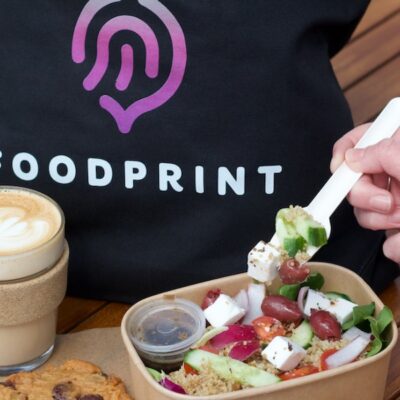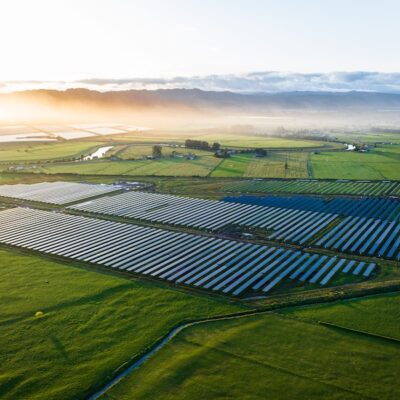Why ethical fashion is serious business
Ethical fashion advocate and designer Amy Conlon shares her insights on why conscious consumerism is rising and why ethical fashion is now serious business.
Ethical fashion advocate and designer, and founder of Outliv, Amy Conlon shares her insights on why conscious consumerism is on the rise and why ethical fashion is becoming serious business.
NZB: Before we dive into ethical fashion, give us a back story about how you ended up as a spokesperson as well as someone on the ground floor of ethical fashion?
Amy: My career in fashion has been an exciting journey including university study in fashion technology combined with working in retail and then progressing to workrooms, fashion studios and fashion manufacturers. I also spent 12 years working in the fashion industry in the UK – one of the most adventurous fashion capitals in the world.
The knowledge and inspiration that I gained working in design roles in both Manchester and London plus the travel throughout Europe on fashion buying trips was invaluable. I worked for a range of different types of fashion businesses from luxury brands, fast fashion retailers, high street brands, suppliers and creative fashion agencies. You could say I’m a life-long learner as I also studied at the London College of Fashion and Central Saint Martins – both prestigious amazing fashion colleges that fueled my passion for this creative industry.
NZB: What made you decide to pursue ethical fashion and how did you go about it?
Amy: Moving back to New Zealand in 2014 with my family, gave me the opportunity to reassess and realign my career with my own personal ethics. I no longer wanted to be part of the supply chain creating endless amounts of product that our planet did not need and was strained to produce; with forever growing landfills worldwide and toxic waste being flushed into rivers and oceans around the world as a by-product from fashion production.
Outliv was created to showcase the beauty that could be created by recycling. I was (and am) committed to making beautiful, lush and modern handbags from upcycling preloved clothing. And I have an equal focus on the importance of raising awareness for a more conscious consumer choice (one with more consideration for our planet).
NZB: Why are we seeing a rise in ethical fashion and people making more ‘conscious’ choices about their clothing purchases in particular?
Amy: The volume has been turned up over the past couple of years about the negative impacts that fashion has on people and the environment. Since the collapse of The Rana Plaza Factory in Bangladesh in 2013, killing 1,134 people and leaving many more seriously injured, the radical global movement Fashion Revolution has been working on an international scale. Collective efforts are growing to unite people and organisations and encourage them to work together: changing the way our clothes are produced, ensuring they are made in a safe, clean and fair way for the good of people and our planet. It is on the rise but still a work in progress. Millennials play a significant part in this, with reports that they value sustainability and have more spending power than any other generation. “Sixty six percent of global millennials are willing to spend more on brands that are sustainable”. (State of Fashion 2018 report by BoF & McKinsey). They are making empowered choices around not only where to spend their money, but also in the statement that these clothes and products say about them.
NZB: Take us to the moment you decided to start your company Outliv and what does the name mean?
Amy: I was at an event during Melbourne Spring Fashion Week listening to Melinda Tually from Fashion Revolution, and her panel, discuss the effects that fashion has on our planet and the idea popped into my head. I am an avid preloved clothing shopper and it made so much sense to me that I should be creating from fabrics that have already been created in an upcycling and circular economy model and not producing new fabrics at the expense of our planet and the people producing these fabrics.
We think fabrics should be considered more valuable and should essentially out-live us through upcycling methods rather than being so easily disregarded to landfill. Hence the name Outliv.
Jeans and the ripped jean trends have massive ramifications for the world’s rivers which are being polluted and destroyed through the chemical processes for blue jeans and from the tannery industries. In addition, toxic chemicals used in the production processes are causing those working in the factories to have serious health issues, and the hazardous wastewater, the by-product from production (if untreated), can pollute soil, groundwater, waterways through to local rivers and out to the sea, which local communities depend on for drinking and agriculture.
If we can get more life out of denim and leather (as well as update practices) it’s a step in the right direction and we are proud to be part of it.
NZB: Since launching Outliv, what positive environmental impact(s) have you measured from creating your product in a more ethical manner?
Amy: Based on our first year of business Outliv has impacted as follows:
Water: 1.5 million litres of water saved. Since a pair of jeans takes an average of 7,600 litres of water to make, and a leather jacket around 30,000 litres (estimates taken from industry standards) Outliv has saved just over 1.5 million litres of water by upcyling preloved clothing. This is equivalent to the entire average water consumption for one year for over six New Zealand households.
Clothing: 181 items of clothing repurposed. Outliv has repurposed and upcycled an estimated 28 pairs of jeans, 45 leather jackets and 108 mix of tops/skirts/dresses. By being able to upcycle this clothing and diverting it from landfill, Outliv avoids contributing to the three percent of global production CO2 emissions that the clothing industry produces annually.
Teddy Love. Outliv repurposes and upcycles preloved teddy bears to use the fabric as faux fur on handbags and purses. An estimated 15,000-plus soft toys are donated to a busy central Auckland Hospice annually. These toys are sent to the hospice’s six stores for sale and if they do not sell within a few weeks they have to be disposed of to landfill to give room for the opportunity to sell the newly donated toys coming through.
Impact through Donations: From the donation made from our first year of business Outliv were able to support the Sea Cleaners fleet of boats for two days to take to the waters to remove an estimated 10,000-20,000 litres of rubbish from our oceans around the Waitemata, Manukau and Northland Harbours combined. Thumbs up big time!
Raising consciousness through events. Outliv hosted two conscious events: ‘Join the Fashion Revolution’ and ‘Let’s Get Ethical’. In doing so we were able to raise awareness to the need for a more fair and safe fashion industry and to the importance of voting with your dollar.
NZB: Have you noticed a rising trend of other businesses having a more ethical stance or a give back element? And what organisation are you supporting and why?
Amy: Yes it is becoming more common for brands to incorporate social responsibility and giving back through their business models. Many companies choose to donate a percentage of their profit to an environmental organisation or a social cause.
Social responsibility is one of Outliv’s values along with supporting local businesses, recycling & upcycling, locally sourced materials, minimal waste design, water conservation, cruelty free, slow fashion, circular economy, sustainability, unique quality product and Made in New Zealand.
Through the Outliv business model we choose to donate to a local organisation with every bag purchased. We donate $5 from every bag and consider this to be a small, yet significant donation for a small business.
NZB: What message do you have for people who say ethical products are a luxury they can’t afford?
Amy: It is time for us all to change our perceptions around fashion and cost. Globally we all need to slow down and buy fewer, better things. This way when we do make a more conscious fashion purchase, yes it may be more expensive, however we will be more aware of the environmental benefits of caring for our products to make them last longer. In turn getting more bang for the buck. Buy Less. Choose Well.
NZB: What are two resources, podcasts or websites you can recommend for people to learn more about conscious consumerism in an easy and accessible way?
Amy: Two of my favourite resources I look to when researching and for inspiration for sustainable fashion are Fashion Revolution (www.fashionrevolution.org) and Clare Press’s Wardrobe Crisis podcasts (www.clarepress.com).
Follow Amy and Outliv on Instagram @outlivofficial or visit www.outliv.co






